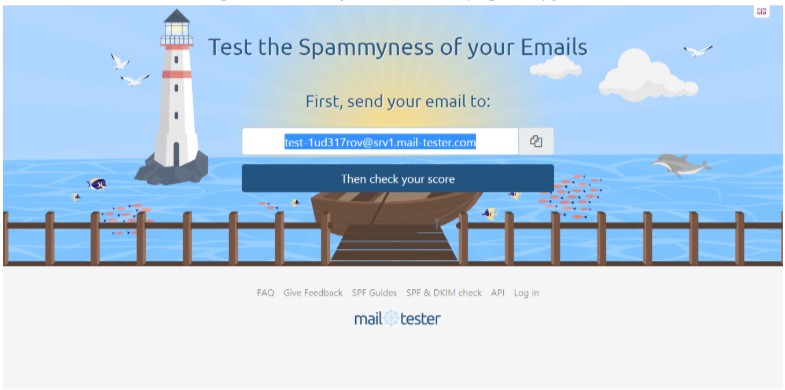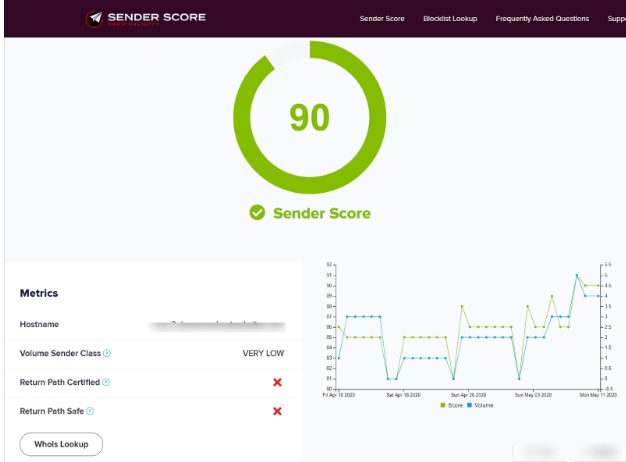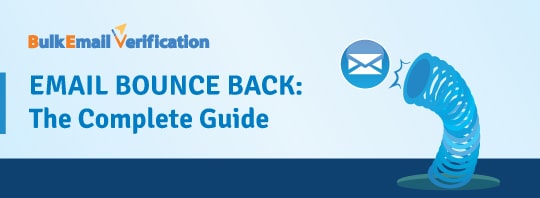
Sender reputation is a score assigned to email senders based on parameters such as the quality of an email campaign, frequency of emails, complaint rate, email volume, etc. It determines whether an email service provider will deliver or validate emails to the recipient’s inbox or not. Choosing a reliable email marketing service liberates you from distressing about sender reputation as it follows all the compliance guidelines when sending emails.
The sender’s reputation is a key factor for your email marketing campaign, A well-maintained sender’s reputation means a higher probability of getting your email landed in subscribers’ inboxes rather than the spam folder or getting bounced.
What Are The Factors Which Will Impact Your Sender Reputation?
The following factors will influence your sender reputation. Paying close attention to each of these will deter your emails from ending up in spam folders.
Spam Complaints
If several subscribers mark your email as spam, it will generate spam complaint reports via feedback loops to your email marketing campaign. Spam complaints are worse for any email marketing campaign.
Email Sending Volume and Frequency
This measures how many and at what frequency an organization is sending emails while running an email campaign. If you have a new IP address and your email reputation is still low, and you are sending large emails in your email campaign, RBLs will find this activity as suspicious and it will lead to the IP address getting blacklisted.
Email Rejection/Bounce Rate
If your emails get rejected due to a hard bounce, it will decrease your sender reputation. A soft bounce is a temporary issue that doesn’t impact the sender’s reputation.
Unsubscribing
Unsubscribing is known as when subscribers choose not to receive your emails anymore. If any users unsubscribe from your list then that may mean your email content is irrelevant for those users or they simply receive too many emails. Unsubscribing will negatively impact your sender’s reputation.
Spam Traps
Many organizations use spam traps to monitor and block spam emails. Spam trap email is not used for mailing purposes but for monitoring. An organization will make sure it has not opted for any marketing emails. If you send emails to an email account like this, it will hurt your sender reputation and further cause an IP blacklist.
How Do You Check Your Sender Reputation?
Below we have outlined two ways that you can calculate or check your sender reputation.
Check your Sender reputation using the Mail Tester Online Tool.
This is the easiest way to calculate your sender reputation.
Visit mail-tester and it will redirect you to the Mail Tester website where you will find an email address.
First Step

The email address will be changed each time you refresh the page. Copy that email address.
Second Step
Send a test email to the same email address from your email marketing campaign or your mail server.
Third Step

After sending an email, click on the “Check Your Score” button. It will take some time to produce the results. Then, it will provide your sender reputation score.
If you receive a 10/10, that means your sender reputation is very high and your emails should be delivered to recipients’ inboxes without any issues.
In case you don’t get a maximum score, you can expand the suggestions provided by the Mail Tester below your score. Try applying these suggestions to improve your score.
(2) Sender Score Calculation
Sender Score is a number between 0 and 100; that number represents your IP’s sender reputation.
The sender score represents the score of the IP address of the sender. An email marketer needs to maintain an excellent sender score because it determines whether your email will be delivered to recipients’ inboxes or not.
Looking to check the sender score. Please click on Check Sender Score to view your Domain’s Sender score.
If you collect a reasonably high score for your mail server IP address, there will be a high chance to deliver the emails.

How Do You Improve Your Sender Reputation and Email Deliverability?
Implement recommendations that allow for the best email practices when running an email marketing campaign. Below are a few pointers that may help your marketing campaign. That will also lead to an improved your sender reputation and email deliverability.
Clean Your Email List Regularly
A common question from a lot of email marketers is, “How often should I clean my email list?” For best results, clean your email list at least every three months. It removes all the inactive or invalid emails from your email list and prevents too many hard bounces.
Also, remove any subscriber from your list that has not opened your last three emails. Those are valid emails, and it won’t be detected in bulk email verification software. Study the previous email marketing results to implement this step.
This will increase email marketing engagements and the sender score.
Remove Inactive Users
If you find that a user is not responding to your emails or does not seem interested, then it’s best to stop
sending emails to them altogether. This will improve the overall engagement rate of your email marketing campaign and help to enhance IP reputation.
Warm-up your IP address
Warming up IP addresses means when your IP address is new, start with a small number of emails and gradually increase the number of emails you send from that IP. If there are a large number of emails you sent from the beginning then this can damage the IP reputation and result in a block from many email service providers.
Schedule your Emails
Sending emails on time is essential. If you share your email once in the blue moon, then your subscriber may not even remember you. Also, if you continuously send emails, then this may annoy or frustrate the user. Many email marketing services provide you with email schedulers. Use them to make your life easier while also keeping your subscribers happy.
Create Quality Content
You should always pay attention to the content of your newsletters and marketing emails. This content should contain related images and videos to attract customers.
- Email content should be precise
- Stick to the point
It is the best way to improve your open rates. Spam filter services detect spam words and subject lines. As technology continues to advance, these services improve as well. If you use a multitude of keywords marked as spam by spam filter services, your email will land in the spam folder or may even become blocked. Not only that, but it can hurt your sender’s reputation.
Add SPF, DKIM, and DMARC Records
SPF, DKIM, and DMARC are ways to verify your mail server and show mail services and other receiving mail servers that you (the sender) is genuinely authorized to send emails. When correctly set up, all three records show that the sender is authentic. Not setting these records will send your emails to the spam box and hurt your sender’s reputation.
Conclusion: Sender Reputation Matters
Sender reputation plays a vital role in delivering emails. You can improve your sender reputation by implementing proactive email practices. Email marketing is beneficial for business only if emails are delivered. Always use the right tools to verify your sender reputation and sender score. This will keep you one step ahead in effective email marketing.


